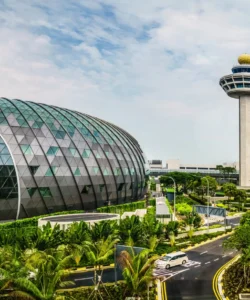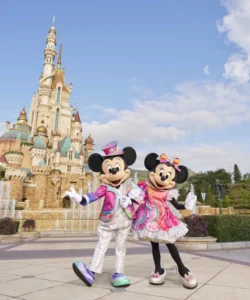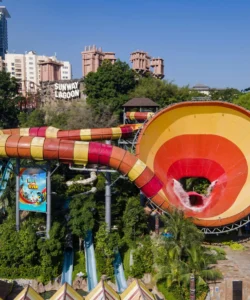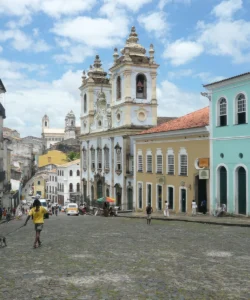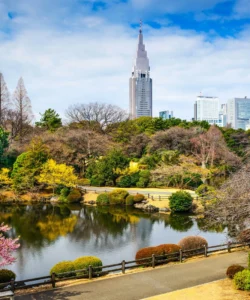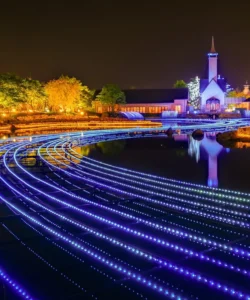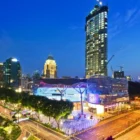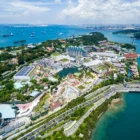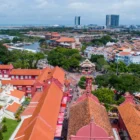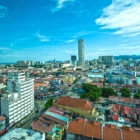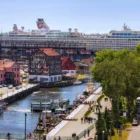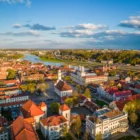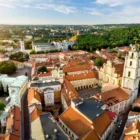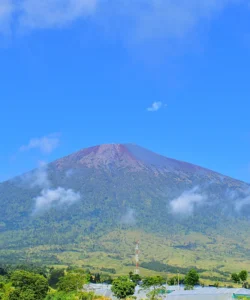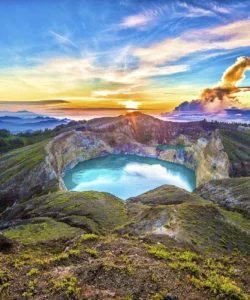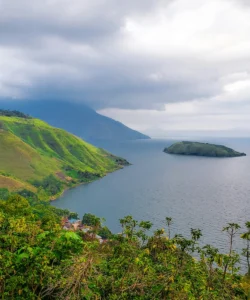The ArtScience Museum, an architectural masterpiece within the Marina Bay Sands complex, is a beacon of creativity and innovation in Singapore. It stands as a unique institution dedicated to exploring the fascinating intersection where art, science, technology, and culture converge.
Name: ArtScience Museum
Address: 6 Bayfront Avenue, Singapore 018974.
It is prominently located on the Marina Bay waterfront, directly adjacent to The Shoppes at Marina Bay Sands and connected to the main Marina Bay Sands hotel towers and Gardens by the Bay.
How to Get There:
The ArtScience Museum is easily accessible via Singapore’s comprehensive public transportation network:
- By MRT (Mass Rapid Transit): The most convenient way is to take the Circle Line (CE1) or Downtown Line (DT16) and alight at Bayfront MRT Station. From there, follow the signs to Marina Bay Sands, and then to the ArtScience Museum. It’s a short 7-10 minute walk from the station, often through an underground linkway directly connected to The Shoppes.
- By Bus: Several public bus routes stop near Marina Bay Sands and the ArtScience Museum.
- By Taxi/Ride-Sharing (Grab, Gojek, Tada): Easily available throughout Singapore for a direct drop-off.
- By Car: Accessible via major roads leading to Marina Bay Sands. Paid parking is available at the Marina Bay Sands North Car Park.
- Walking: It’s a very pleasant walk from other Marina Bay attractions like the Merlion Park, Singapore Flyer, or Gardens by the Bay, connected by scenic pedestrian bridges (like the Helix Bridge and Garden Bay Bridge) and promenades.
- Boat Taxi: For a unique approach, you can take a WaterB boat taxi from Merlion Park or other points along the Singapore River to the Bayfront North WaterB kiosk, which is a short walk from the museum.
Landscape and Architecture:
The ArtScience Museum’s architecture is its most striking feature, instantly recognizable and deeply symbolic.
- “Lotus Flower” or “Welcoming Hand” Design: Designed by renowned architect Moshe Safdie (who also designed Marina Bay Sands), the museum’s form is inspired by a blooming lotus flower or, as some describe it, a “welcoming hand” reaching out from the ground. It consists of a circular base from which ten “fingers” or “petals” extend upwards, each crowned by a skylight.
- Self-Supporting Petals: The design of these “petals” is complex and innovative. They are clad in a double-curved Fiber Reinforced Polymer (FRP) skin, a material typically used in the construction of boats and yachts, allowing for a seamless, joint-less surface. The highest petal reaches 60 meters (about 197 feet) high.
- Natural Light Integration: The skylights at the “fingertips” of each petal allow natural daylight to dramatically illuminate the interior gallery spaces, creating a varied and dynamic lighting environment within the museum.
- Rainwater Harvesting System: The dish-like roof form of the museum is ingeniously designed to collect rainwater. This water is then channeled through a central oculus, creating a 35-meter (115-foot) indoor waterfall that plunges into a small reflecting pool within the museum’s central atrium. This sustainable feature is both functional and visually stunning.
- Reflecting Pool: The museum is surrounded by a large lily pond reflecting pool, which enhances its “floating” appearance and contributes to the serene atmosphere.
- Connection to Marina Bay Sands: It’s an integral part of the larger Marina Bay Sands integrated resort complex, located prominently on the waterfront promenade.
What Makes It Famous:
- Iconic Lotus-Inspired Architecture: Its unique and instantly recognizable lotus-shaped design has made it an architectural landmark of Singapore and a highly photographed symbol of the city’s innovative spirit.
- Intersection of Art, Science, and Technology: The museum’s core mission is to explore the dynamic relationship between art, science, technology, and culture. It is known for staging large-scale, interdisciplinary exhibitions that bridge these fields, often pushing boundaries and sparking curiosity.
- “Future World: Where Art Meets Science”: This is a highly popular and permanent interactive digital art exhibition created in collaboration with the Japanese art collective teamLab. It immerses visitors in a vibrant, interactive digital playground where art comes alive, and their movements influence the displays.
- World-Class Touring Exhibitions: The ArtScience Museum is renowned for hosting major international touring exhibitions from prestigious partners worldwide. These have included blockbusters on famous artists (Leonardo da Vinci, M.C. Escher, Salvador Dalí, Andy Warhol, Vincent van Gogh) as well as significant scientific and technological themes (particle physics, big data, robotics, space science).
- Interactive and Immersive Experiences: The museum strongly emphasizes interactive and immersive experiences, particularly with its digital art installations and a dedicated VR Gallery, allowing visitors to engage with the exhibits in new and exciting ways.
- Sustainable Design: The integration of the rainwater harvesting system that creates an indoor waterfall is a famous example of its commitment to sustainable and environmentally conscious design.
Differences from Some Other Wonders:
- Thematic Focus (Art & Science Fusion): Unlike general art museums or history museums (like the National Museum of Singapore), or purely science museums, the ArtScience Museum has a unique and explicit thematic focus on the convergence of art and science. This interdisciplinary approach makes its exhibitions distinct and often more experiential.
- Iconic and Functional Architecture: While many museums are architecturally significant, the ArtScience Museum’s building is not just aesthetically pleasing but also symbolically and functionally integrated with its mission (e.g., petals symbolizing curiosity/knowledge, rainwater harvesting).
- Changing Exhibition Model: While it has permanent installations (like “Future World”), a significant part of its fame comes from its constantly changing lineup of major international touring exhibitions. This ensures a fresh experience with each visit, unlike static collections in some other museums.
- Digital and Immersive Emphasis: It leans heavily into digital art, interactive installations, and virtual reality to deliver its content, offering a more technologically advanced and immersive experience compared to more traditional museum displays.
- Integration with a Mega-Resort: Its direct connection and proximity to the Marina Bay Sands integrated resort means visitors can easily combine their museum visit with luxury shopping, fine dining, a casino, and other entertainment, offering a different context than a standalone museum.
- Rainwater Waterfall Feature: The unique architectural element of the indoor waterfall formed by rainwater collected from the roof is a defining and famous feature not typically found in other museums or buildings.
ArtScience Museum Photos:































